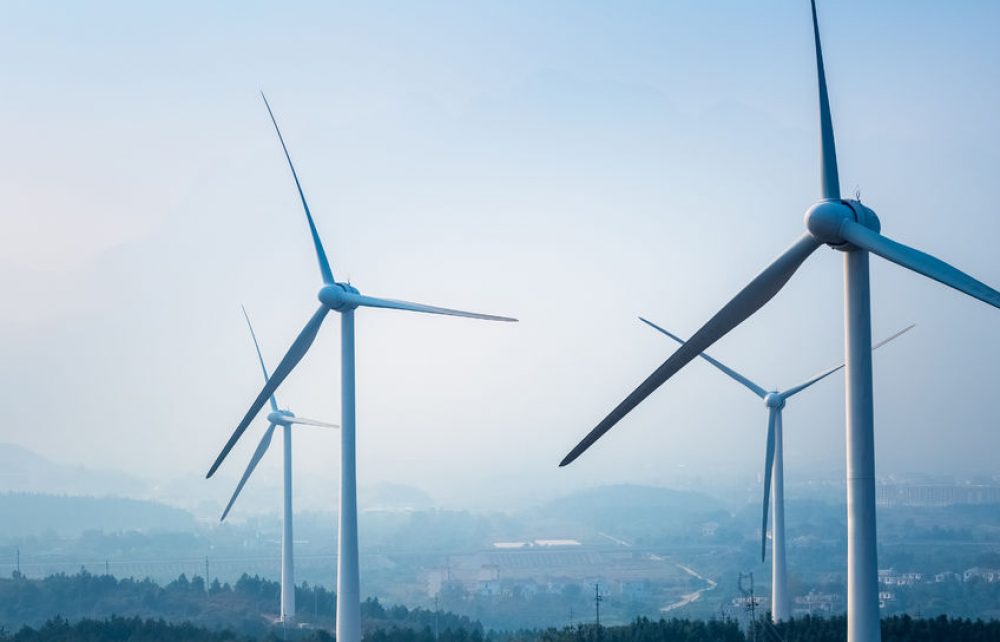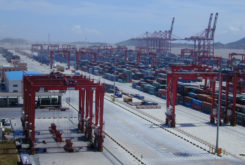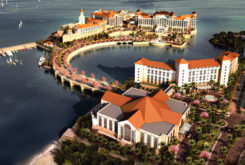The government of Cabo Verde is pushing ahead with its ambition of becoming the first country in the world to source all of its electricity from renewable energy technologies. In 2010, it set a goal of increasing the proportion of electricity produced by renewables to 50% by 2020. It has been so pleased with the results of the first round of projects that it has decided to go one step further. By coupling wind and solar power with desalination, pumped storage plants and batteries, it aims to completely phase out the use of fossil fuels in power production.
Wind turbine costs have fallen rapidly over the past decade, while turbines have become more efficient. Solar photovoltaic (PV) infrastructure has followed the same pattern more recently, with lower manufacturing costs and each generation of solar cells absorbing a higher proportion of the energy from the sunlight that reaches them. Chinese companies in particular have managed to market residential PV units in Africa at prices that are competitive with kerosene, the traditional lighting fuel in many areas. Six of the ten biggest solar PV manufacturers in the world are based in China.
The government of Cabo Verde has set up a new company, Cabeólica, to develop renewable energy projects. The firm is often described as operating the Cabeólica Wind Farm but in fact its 25.5MW generating capacity is spread across four sites on different islands. They account for a big slice of national generating capacity, which stands at 150 MW. All of its turbines are 850kW rated, making them small by current international standards: with eleven on Santiago, nine on Sal, seven on Sao Vicente and three on Boavista. They cost a total of $90 million to develop.
Cabeólica is owned by the Africa Finance Corporation, the government, state power and water utility Electra, the Finnish Fund for Industrial Cooperation and InfraCo, which is a donor funded project development company that supports early stage infrastructure projects in developing countries. The 30 turbines, which were supplied by Danish firm Vestas, are designed for use in places with high wind speeds and weak electricity grids. Prospective new wind farm sites on the islands enjoy average wind speeds of 8-10 metres a second, placing them among the most attractive locations anywhere in Africa.
The four wind farms comprised the first commercial privately-financed wind power project in Sub-Saharan Africa, using loans from the African Development Bank and the European Investment Bank. The government calculates that Cabeólica’s existing wind farms already save the country $12 million/year in foreign exchange, while power generation feedstock accounted for 20% of total import costs in 2010, before the first turbines came on stream. The switch from thermal to renewables should make Cabo Verde less reliant on imports and so less prone to currency and oil price fluctuations.
2025 target
Some coverage of the government’s plans has exaggerated the speed of its timetable. Rather than 2020, the government has set a goal of ensuring 100% renewable energy power generation by 2020-25, with 2025 as the effective deadline. Nevertheless, it could become one of the very first countries anywhere in the world to achieve 100% reliance on renewables.
It could become one of the very first countries in the world to achieve 100% reliance on renewables.
Other countries with very high levels of low carbon power generation, such as Iceland and Norway, are heavily reliant on large hydro schemes that are not usually regarded as renewable energy technologies. Although they generate low carbon emissions, the impact of flooding usually rules them out. Cabo Verde’s biggest rival to goal of ensuring 100% renewable power production is likely to be Costa Rica, whose government has pledged to achieve the same goal.
Similarly, the government is not aiming for 100% renewable energy consumption by 2020 or even 2025. Its ambitions at this stage are limited to power generation. The archipelago’s motor vehicles will continue to run on petrol and diesel for the foreseeable future. Nevertheless, the drive for renewables is just one part of the country’s four-pronged energy strategy. The government is also seeking to ensure:
1. universal access to electricity by the end of this year;
2. a 20% reduction in energy consumption through energy efficiency measures by 2030.
3. universal access to sustainable cooking fuels, usually butane gas, to end the use of three-stones cooking. About 30% of households still use firewood and charcoal for cooking.
Universal electrification
It should be relatively easy to achieve universal electrification, as the national electrification rate has already increased from 54.4% in 2000 to 90.2% in 2014. The vast majority of people in the big towns have access to electricity but rural electrification stood at just 79.2% in 2014. Reaching more remote rural homes is always the most difficult part of achieving universal electrification.
Micro-grids, often covering just a handful of customers, are considered the ideal solution. Micro-grids are already in use in many rural locations, although centred on small diesel-fired plants at present. The government hopes to replace these diesel facilities with solar and wind power projects, while developing new micro-grids. Studies commissioned by the government calculate that the transition will reduce power costs.
At first sight, it may seem easier to achieve 100% renewable energy consumption in a country with a population of just 550,000. Yet the Cabo Verdean power market is highly fragmented, with the population scattered across nine inhabited islands. There are no transmission interconnectors between the islands, so the power market effectively consists of nine island-grids. In addition, some of the islands are bisected by steep mountains, making it more difficult to build transmission lines. The biggest source of demand is Santiago, which accounts for about half of the country’s population.
The emphasis on energy efficiency should make it easier to achieve the other two goals by reducing the total amount of generating capacity that the country needs. The centrepiece of the energy efficiency campaign is reducing electricity losses between generation and consumption from more than 30% at present, to 8% by 2030. This will require investment in upgrading transmission and distribution infrastructure.
This might suggest that the 20% reduction could be achieved without affecting end users. However, the government forecasts that national power consumption will increase from 360 GWh in 2015 to 670 GWh in 2020, partly as a result of electrification, the purchase of additional electric appliances by residential customers and the completion of new tourist facilities. As a result, energy efficiency building standards are being drawn up to reduce consumption. Per capita electricity consumption currently stands at 727 kWh/year, which is low by international standards but high in comparison with most African countries.
Energy storage
Economic energy storage is the holy grail of the renewable energy revolution and is needed to ensure that the country can do without thermal plants. Almost all forms of renewable power production are intermittent, in that wind turbines only generate electricity when the wind blows and solar photovoltaic (PV) power production is limited to daylight hours. Geothermal plants are one of the main exceptions as they work like traditional thermal power plants, while concentrated solar power (CSP) stores energy in liquids that can be released over many hours, but CSP is still an expensive option.
The government of Cabo Verde is therefore banking on more tried and tested forms of energy storage to enable a switch to 100% renewables. Batteries and flywheel energy storage are expensive options but will form a part of the Cabo Verdean strategy. However, the government is banking on integrating water desalination and pumped storage to enable it to smooth out the fluctuations in power generation. This will allow the country to turn one of its biggest weaknesses into an advantage.
Annual average rainfall is just 261mm; anything below 250mm is defined as a desert. Almost all of this falls between August and October, so the archipelago is heavily reliant on water storage and, increasingly, desalination. The government’s plan is for desalination plants to operate only when there is plenty of wind powered electricity.
The drinking water produced will then be held in pumped storage schemes, which are already used in some other countries to even out power demand. Water is pumped up to reservoirs when electricity is plentiful and then released to power turbines that generate more electricity when it is in short supply. Such schemes actually consume more electricity than they produce but absorb power production that would otherwise be unused and generate it when it is most needed.
A study published in December 2015 concluded that Cabo Verde could achieve 72% wind and pumped storage hydro power production by 2020, resulting in a 19% reduction in total electricity costs in comparison with sticking with small thermal plants coupled with some wind power. In common with many island nations, electricity is expensive in Cabo Verde. According to Cabeólica, power tariffs have fallen from an average of $0.40/kWh in 2012 to $0.26-0.32/kWh in 2017, but this compares to an average of $0.12/kWh in the US and $0.09-0.33 in the European Union.
In addition to increasing power production and reducing power costs, the strategy should improve the reliability and volume of water supplies in the country. Two desalination plants, on Sal and San Vicente and each with water production capacity of 5,000 cu m/day, are being developed by a joint venture of Acciona Agua and local firm Sade, with stakes of 59% and 41% respectively. They will supply water to about 20% of the population. Desalination plants already account for 15% of all power demand and this proportion is likely to increase as tourist numbers rise.
The government is not banking on the roll-out of other renewable energy technologies to achieve its 100% target but is encouraging their development. In September 2017, German firm SINN Power signed a contract with the Maritime and Port Office of Cabo Verde to install a wave power array off the coast Sao Vicente. There is some geothermal potential, as yet untapped, that could provide baseload capacity. In the longer term, the archipelago is regarded as highly prospective for ocean thermal energy conversion, which utilises the difference in temperature between shallow and deep water.




